Air conditioners are easily one of the largest appliances in an RV. They require a lot of power to run safely and efficiently.
So if you like to do a lot of dry camping or boondocking, the obvious question to ask is: what size generator is needed to power an RV air conditioner?
In short, your generator will need to supply enough starting and running watts to power up your air conditioner and keep it running. For a 15,000 BTU air conditioning unit, your generator should be able to handle a minimum of 5,000 starting watts and 2,000 running watts.
If you like boondocking or dry camping in your recreational vehicle, you will need to make sure your generator can efficiently run your air conditioner when there’s no shore power to plug into. After all, nobody likes sitting around in a sweltering, stuffy RV.
The issue that many RVers run into is that it’s rare to only run your RV’s A/C unit.
In most cases, you will have the AC running while you are cooking, watching television, opening an electric awning, or otherwise conducting RV life.
That means that your generator will need to handle the wattage needs of your air conditioner, as well as any appliances you are running simultaneously.
Fortunately for you, we are going to break down the math and help you find the information you need to calculate the right size generator to power your RV air conditioner (and other appliances).
So let’s get to it!
What Size Generator Is Needed To Run An RV Air Conditioner?
To put it as simply as possible, you need a generator that can handle the running and starting wattages of your RV air conditioner plus any other appliances you usually run simultaneously.
For example, let’s say your air conditioner requires 2,000 running watts. You also like to run your refrigerator (1,600 watts) and microwave (800 watts) without turning off your A/C.
That would mean your generator must handle loads of up to 4,400 watts (2000 + 1600 + 800 = 4400).
But in order to begin estimating the wattages required of your RV’s various appliances, you will first need to understand how they are rated and how to find those ratings for your rig’s specific appliances.
So let’s start by breaking down the most common metric used to advertise RV air conditioners: BTUs.
What Are BTUs?
Many air conditioning units are rated with a certain BTU capacity. ‘BTU’ stands for ‘British Thermal Units’.
Technically speaking, it is a measurement of the amount of energy required to increase the temperature of a pound of water by 1℉.
When we are talking about RV furnaces and air conditioning units, it refers to a specific unit’s heating or cooling capacity.
As you’d expect, air conditioners with more cooling capacity will come with a higher BTU rating.
How Are BTUs And Wattage Related?
So, while your air conditioner’s cooling capacity is measured in BTUs, the metric we really want to get down to is wattage.
In order to decide what generator size is needed to power your RV air conditioner, you need to know the wattage ratings for the specific A/C make and model in your rig.
As you’d expect, wattage ratings for A/C units go up as BTU ratings increase. Larger RV A/C units will require more starting watts (the wattage required to get it up and running) and running watts (the wattage required to keep it running once it’s turned on).
Starting wattage is almost always higher than running wattage. So this number is more important to help you understand the upper threshold of the loads your generator must be able to handle.
In other words, if your generator has enough power to get your air conditioner started, it will also have enough power to keep it running.
That being said, you can still max out your generator if you turn on too many other appliances while your air conditioner is running.
Generally speaking, it’s better to have more power than needed than it is to come up short. But buying a generator that’s slightly too large for your RV comes with other issues.
So let’s discuss how to get a better estimate of your RV’s power consumption.
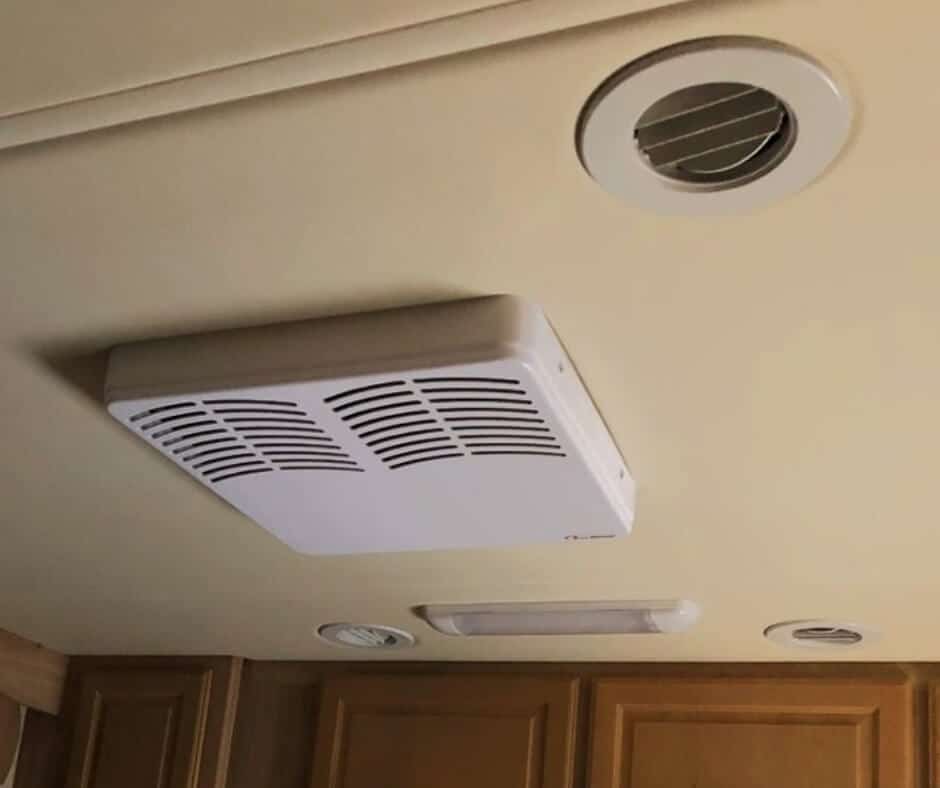
How To Estimate Your A/C Power Consumption
Most RVs are either equipped with 13,500-BTU A/C units or 15,000 BTU units. These are the most common sizes, but there are larger and smaller units out there.
So to begin estimating your power needs, you will need to identify the starting and running wattages for your air conditioning unit.
The best places to find the starting and running wattages for your RV’s air conditioning units are either on the manufacturing label (on the unit itself) or in your RV owner’s manual.
That said, here’s a quick reference chart of common starting and running wattages according to air conditioning cooling capacity:
| BTU Rating | Starting Wattage | Running Wattage |
|---|---|---|
| 10,000 | ~1,800 | ~1,200 |
| 13,500 | ~3,800 | ~1,300 |
| 15,000 | ~5,100 | ~1,600 |
To be clear, this table is simply meant as a general reference. Again, you should consult the owner’s manual for your RV or air conditioning units for specific wattages.
Also, keep in mind that you will have to add up these totals if your RV is equipped with multiple air conditioning units. Sure, it’s simple math.
But it’s vital if you want to make sure your generator can power up and continuously run both (or all) of your air conditioning units.
How Much Added Power Do You Need?
On top of the wattage ratings for your RV’s air conditioning units, you will have to pay attention to the ratings for your rig’s other large appliances.
This includes things like your refrigerator, microwave, fans, and television unit. The reality of RV life is that you will rarely be running just one appliance at a time.
Plus, it’s going to be super inconvenient if you have to turn off your air conditioning units when you want to warm something up in the microwave.
If you choose the right size generator, this won’t be an issue. But estimating your additional power needs (on top of the baseline needs for your air conditioners) starts with an assessment of which appliances you use most frequently.
This is obviously going to be different for every RV owner, but here’s an example chart to give you a better visual:
| Appliance | Starting Wattage | Running Wattage |
|---|---|---|
| 15,000 BTU A/C Unit | ~5,100 watts | ~1,600 watts |
| Refrigerator | ~800 watts | ~1,600 watts |
| Microwave | ~625 watts | ~800 watts |
| 32” LCD Television | 150 watts | 0 watts |
As I mentioned, this chart is solely to give you an example. Your appliances very well may use less power (and they may also use more).
But let’s use these numbers to illustrate how you can estimate your added power needs.
Estimating Your Total Power Needs
If you are running all four of these appliances at once, your generator will need to be capable of handling approximately 4,000 running watts (1600 + 1600 + 800 + 0 = 4000).
That is certainly possible and your generator should be more than capable of handling that kind of load.
The reality is that it is highly unlikely that you will start all of these appliances at exactly the same time.
It would actually require a bit of a coordinated effort by multiple people to do so, but, if you did, your generator would need to handle at least 6,675 starting watts (5100 + 800 + 625 + 150 = 6675).
The more common scenario is that you will already have one or two of these appliances running when you go to start your air conditioning unit (or units).
So, a more realistic metric can be to add your A/C unit’s starting wattage to the running wattages of your other appliances.
For example, let’s say your refrigerator and television are on when you go to start your A/C unit.
In this scenario, the load placed on your generator would be approximately 6,700 watts (5100 + 1600 + 0 = 6700).
Understanding The Scenarios
This is usually going to be the largest load that your generator will have to handle.
But there can be a myriad of scenarios that will change the load placed on your generator. If you begin to brainstorm, you can see that they’re almost endless.
The fridge, water heater, and microwave are running when I go to turn on a reading lamp. Both A/C units are running when I want to operate the electric-powered awning.
Dad turns on the RV’s rear air conditioning unit at the exact same moment that Mom starts the microwave.
The list can go on and on. But if you do a few calculations using your RV’s largest appliances, you will be able to game plan for the largest loads your generator will need to handle.
And then you can go about finding a generator that can handle those loads!
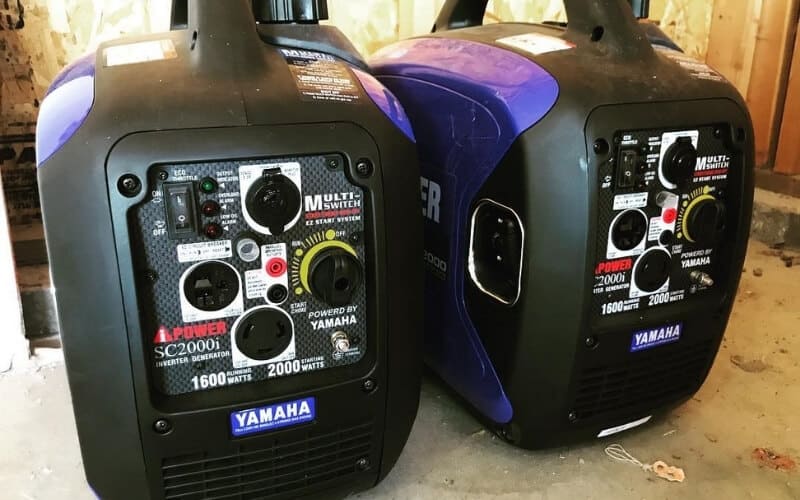
Choosing A Generator To Power Your RV Air Conditioner
Now that you know how to estimate how much starting and running wattage you’ll need from a generator, you need to know how generator sizes are measured.
The good news is that we haven’t done all this talking about wattage to suddenly switch things up and offer a new metric.
Most generators come with an advertised wattage that makes it relatively easy to compare them with your RV’s power needs.
Most of you with small-to-medium-sized RVs will probably be fine with a 2,000 to 4,000-watt generator.
Larger RVs, travel trailers, and fifth wheels may require something that can handle loads up to 5,000 watts or higher.
These larger units tend to be bulkier and require more storage space. They also tend to be a bit louder than some of the smaller portable generators for RV use.
That being said, some generators can be operated in parallel with a second unit. That increases your power output while allowing you to employ two smaller units instead of one large one.
Also, most generators for RV use these days are gas-powered, but some can run on either gas or liquid propane.
If you opt for a model that can run off either fuel type, keep in mind that the advertised wattage can change depending on the type of fuel you add to the generator.
How To Maximize Your Generator + AC Efficiency
Making sure the numbers match when it comes to the wattages of your generator and A/C unit is really only the first step to running your RV’s air conditioner.
There’s a big difference between operating an RV air conditioning unit and doing so as efficiently as possible.
Why should you care about efficiency? Great question.
The more efficiently you operate your A/C unit, the better it will be at keeping the cabin of your RV at your desired temperature. Plus, the most efficient operation as possible will also maximize the life span of both your air conditioner and your RV generator.
So, here are a few do’s and don’ts to help you maximize your generator and air conditioner efficiency:
Do:
- Add cleaning of your air conditioner and replacement of its filters to your regular RV maintenance routine
- Use fans in your RV to help circulate air and increase comfort
- Use certain appliances only at night or in the evenings to balance energy usage
- Be smart about which appliances you run simultaneously
- Unplug phones, appliances, and other powered accessories when you aren’t using them
- Run your air conditioner low and slow. It’s okay to leave it on for several hours at a time to keep the temperature where you want it.
Don’t:
- Start all of your RV’s appliances at the same time
- Run all of your RV’s appliances simultaneously
- Leave your air conditioning units running for long periods of time (6+ hours) without giving them a break. It will run them down faster and lead to replacement more quickly.
- Blast your air conditioning unit for short periods of time throughout the day. This is the most inefficient way to run air conditioning because it never quite gets the internal temperature of your RV to the desired level.
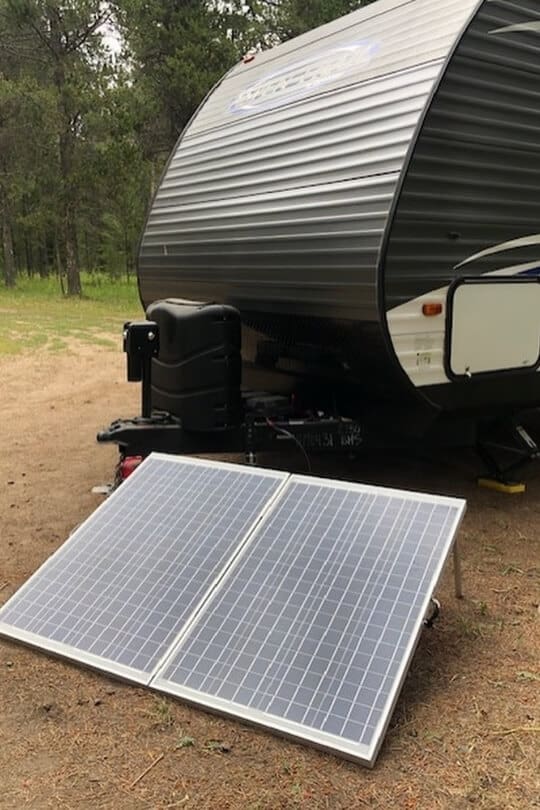
Consider A Solar Panel Installation
In addition to these do’s and don’ts, many RV owners install a small set of solar panels to supplement the power provided by their generator. This is especially popular for dry camping and boondocking.
By installing solar panels, you can increase your power storage that can provide supply to smaller appliances.
Instead of relying on your generator to provide all of your power needs, you can charge phones, laptops, and other electronics using your solar installation.
Depending on the exact solar setup you go with, you may even be able to power some smaller appliances with your installation.
But the point here is that solar installations will reduce the overall burden on your RV’s generator.
As a result, it will allow you to run your larger appliances more efficiently, and for longer periods of time, when you are camping in more remote locations.
Conclusion
Learning how to choose the right size generator to keep you cool and comfortable in your RV is a big part of mastering your RVing Know How.
We hope that you’ve found this guide useful to help you ensure that your RV’s generator is ready to handle your A/C power needs for the upcoming travel season.
If you have any direct experience with replacing RV generators or choosing a new one for a rig with large air conditioning units, we’d love to hear from you! Drop us a comment below and share your story.

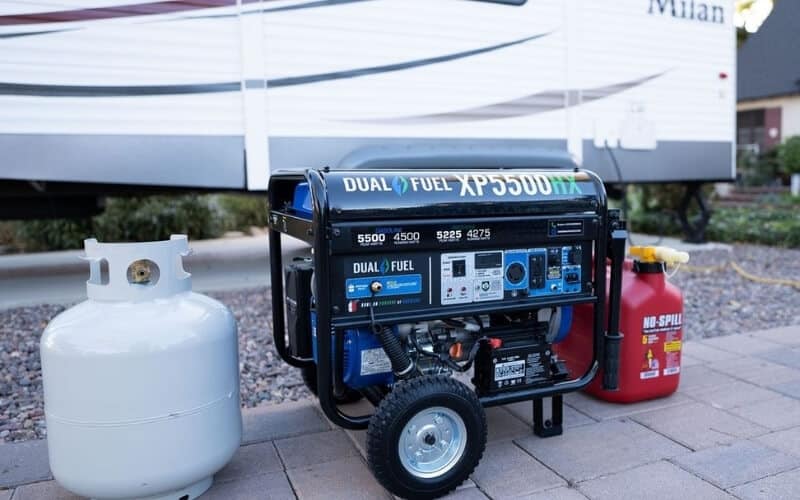
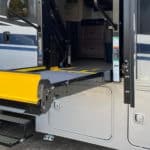
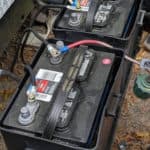
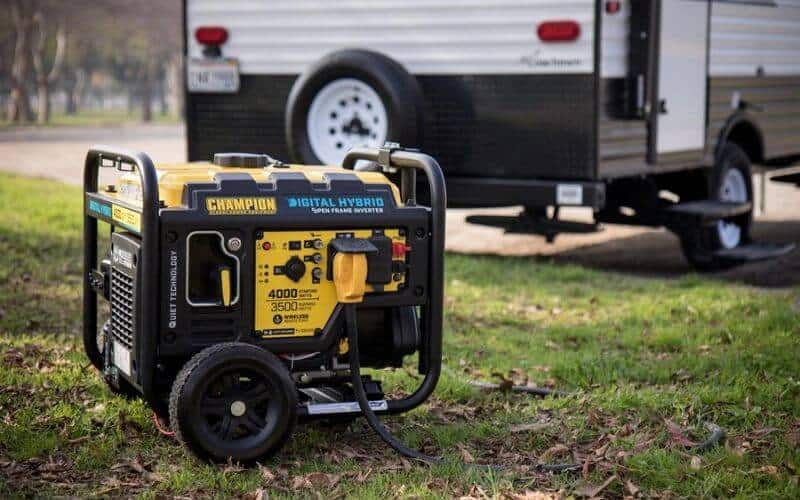
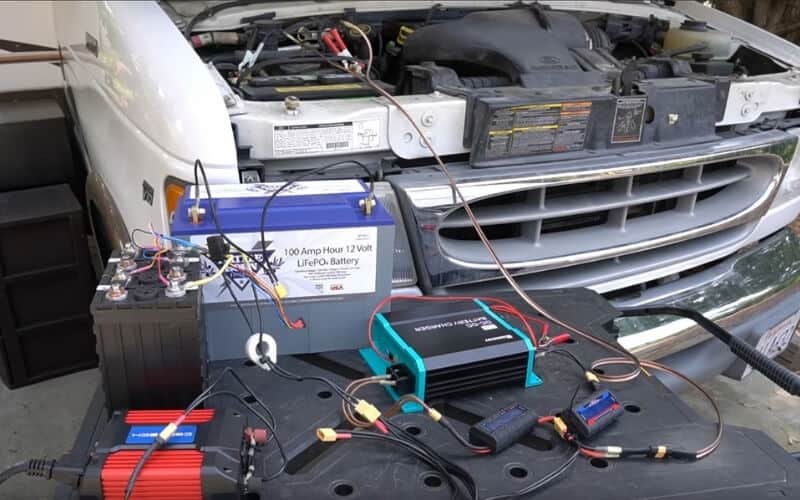
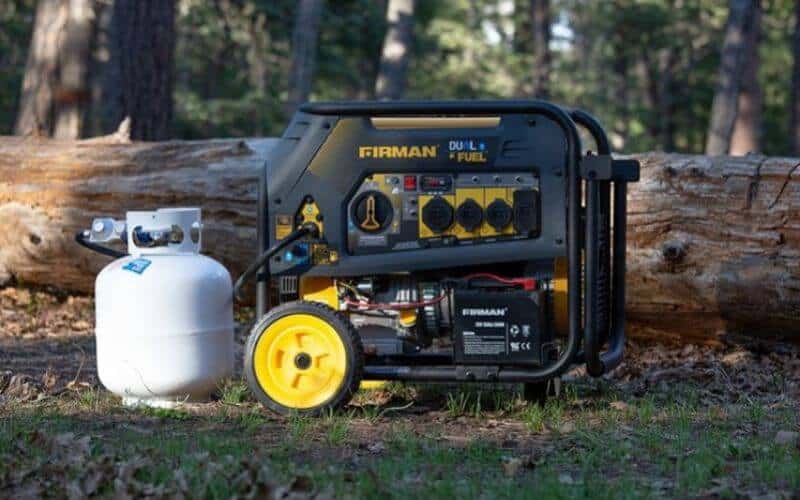
1 Comment
Lakin Zoe
9 months agoTo find the right generator size for your AC unit, check the starting and running wattage in the AC specifications. Generally, a 2,000 to 4,000-watt or higher generator should work well for most RV AC units.